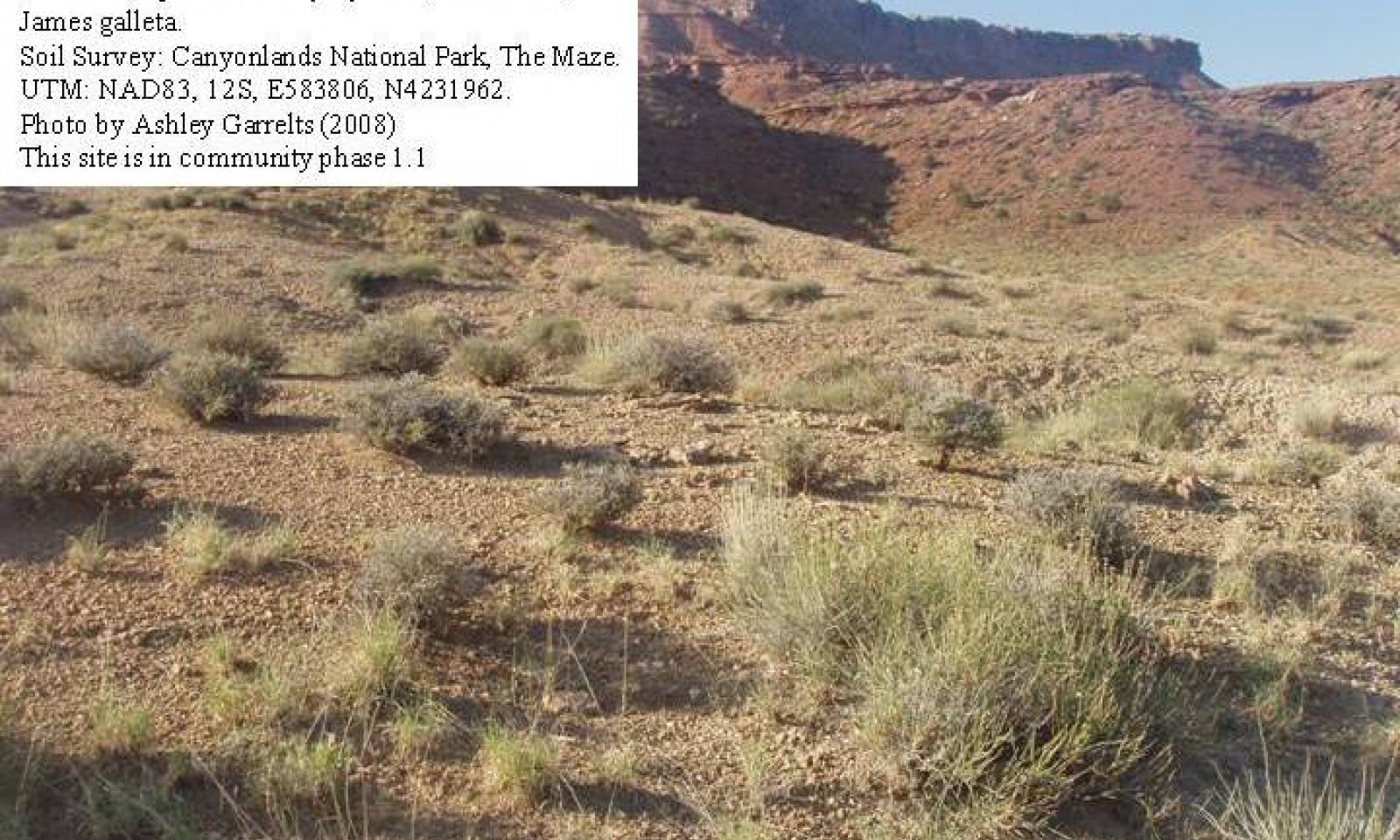
Desert Very Shallow Gypsum (Torrey's Jointfir)
Scenario model
Current ecosystem state
Select a state
Management practices/drivers
Select a transition or restoration pathway
- Transition T1A More details
-
No transition or restoration pathway between the selected states has been described
Target ecosystem state
Select a state
State 1
Reference State



Description
The reference state represents the historic plant communities and ecological dynamics of the Desert Very Shallow Gypsum, Torrey’s jointfir ecological site. This state includes the biotic communities that become established on the site if all successional sequences are completed under current climatic conditions; natural disturbances are inherent in its development. This state is dominated by Torrey’s jointfir, a mixture of other shrubs, and limited amounts of perennial grasses. The reference state is self sustaining and resistant to change due to high resistance to natural disturbances and high resilience following natural disturbances. Biological soil crusts are highly variable in their expression on this site.
The reference state was determined by study of rangeland relic areas, areas protected from excessive disturbance and outside influences, such as grazing and recreation. Literature reviews, trends in plant community dynamics, and historical accounts are also considered.
Reference State: Community phases resistant to natural disturbances.
Indicators: A site dominated by Torrey’s jointfir where James galleta, Indian ricegrass and sand dropseed may also be present.
Feedbacks: Natural fluctuations in climate that allows for a self sustaining Torrey’s joitfir and a native grass community understory. Any disturbance that may allow for the establishment of invasive species.
At-risk Community Phase: All communities are at risk when perennial plants are stressed and nutrients are available for invasive plants to establish.
Trigger: Introduction of invasive plants to fill available niches.
Submodel
State 2
Current Potential State



Description
The plant communities found on this State are similar to those found State 1 except that invasive species have become established in the herbaceous layer. Species commonly invading this state include cheatgrass, red brome, Russian thistle and possibly halogeton.
Indicators: A site dominated by Torrey’s jointfir where James galleta, Indian ricegrass and sand dropseed may also be present. Invasive weeds are present also.
Feedbacks: Natural fluctuations in climate that allow for the self sustainment of Torrey’s joitfir and a native grass community. Any disturbance that may allow for an increase in those invasive species presently occupying the state.
Trigger: Any activity that allows invasive weeds to become more prominent in the plant communities.
Submodel
Mechanism
--Transition from Reference State (State 1) to Current Potential State (State 2)—
This transition is from the native perennial warm and cool season grass understory in the reference state to a state that contains invasive species. Events include season long continuous grazing of perennial grasses, prolonged drought, and surface disturbances, etc. However invasive species such as cheatgrass have been known to invade intact perennial plant communities with little to no disturbances. Once invasive plants are found in the plant community a threshold has been crossed.
Model keys
Briefcase
Add ecological sites and Major Land Resource Areas to your briefcase by clicking on the briefcase (![]() ) icon wherever it occurs. Drag and drop items to reorder. Cookies are used to store briefcase items between browsing sessions. Because of this, the number of items that can be added to your briefcase is limited, and briefcase items added on one device and browser cannot be accessed from another device or browser. Users who do not wish to place cookies on their devices should not use the briefcase tool. Briefcase cookies serve no other purpose than described here and are deleted whenever browsing history is cleared.
) icon wherever it occurs. Drag and drop items to reorder. Cookies are used to store briefcase items between browsing sessions. Because of this, the number of items that can be added to your briefcase is limited, and briefcase items added on one device and browser cannot be accessed from another device or browser. Users who do not wish to place cookies on their devices should not use the briefcase tool. Briefcase cookies serve no other purpose than described here and are deleted whenever browsing history is cleared.
Ecological sites
Major Land Resource Areas
The Ecosystem Dynamics Interpretive Tool is an information system framework developed by the USDA-ARS Jornada Experimental Range, USDA Natural Resources Conservation Service, and New Mexico State University.

